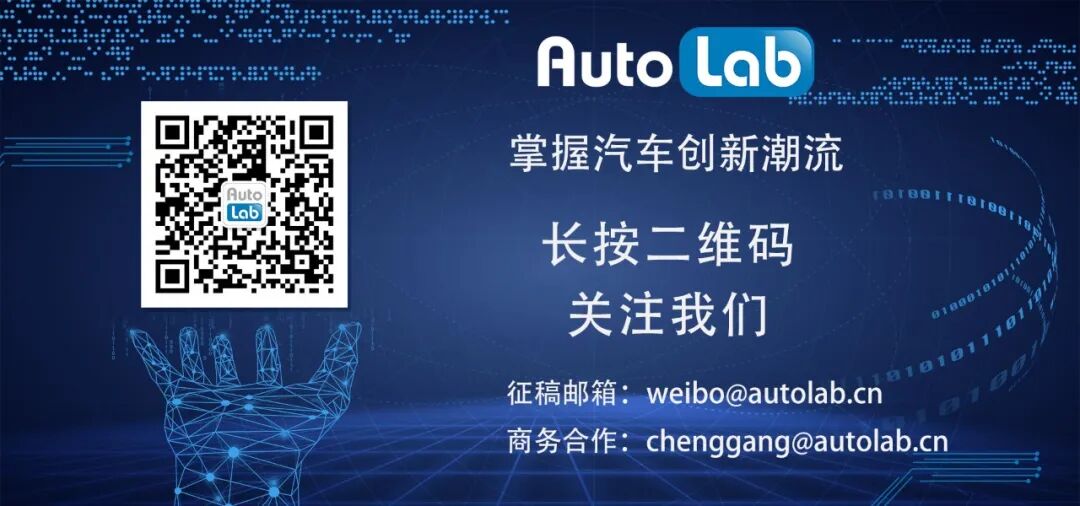 By Wu PengfeiWhat kind of Porsche can you buy for 888,000? A Macan GTS or a 718 GTS? Now you have another option, the entry-level Taycan.As Porsche’s first all-electric vehicle, the Taycan series is inherently positioned to compete with the Tesla Model S. Note my wording: series.Like the 911, the Taycan has many models, and with the recent release of the entry-level version, the Taycan series now includes four models ranging from high to low: Taycan Turbo S, Taycan Turbo, Taycan 4S, and the Taycan, priced at 1,798,000, 1,498,000, 1,148,000, and 888,000 respectively.
By Wu PengfeiWhat kind of Porsche can you buy for 888,000? A Macan GTS or a 718 GTS? Now you have another option, the entry-level Taycan.As Porsche’s first all-electric vehicle, the Taycan series is inherently positioned to compete with the Tesla Model S. Note my wording: series.Like the 911, the Taycan has many models, and with the recent release of the entry-level version, the Taycan series now includes four models ranging from high to low: Taycan Turbo S, Taycan Turbo, Taycan 4S, and the Taycan, priced at 1,798,000, 1,498,000, 1,148,000, and 888,000 respectively.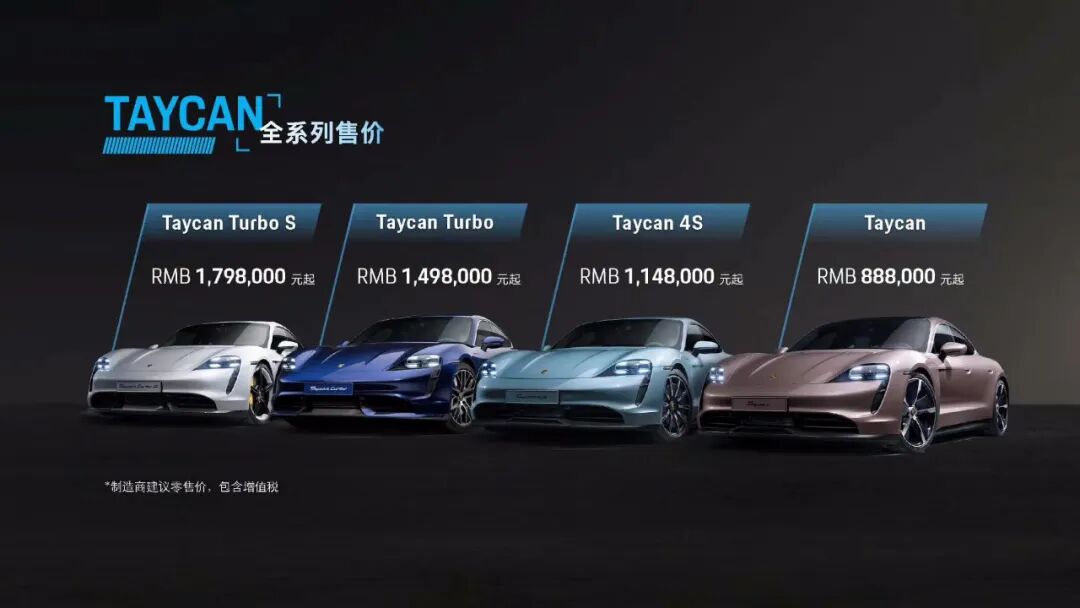 Perhaps because the price of 888,000 is indeed cheap, Porsche is quite confident that this entry-level Taycan will be the best-selling model in this series. (Wait, do people who buy Porsches care about price?)However, as an onlooker, I was stunned when I saw this pricing; even with a monthly salary of 3,000, I couldn’t help but exclaim: Wow, that’s cheap.
Perhaps because the price of 888,000 is indeed cheap, Porsche is quite confident that this entry-level Taycan will be the best-selling model in this series. (Wait, do people who buy Porsches care about price?)However, as an onlooker, I was stunned when I saw this pricing; even with a monthly salary of 3,000, I couldn’t help but exclaim: Wow, that’s cheap.
The Cheapest Taycan Must Have the Strongest Backbone
For less than 900,000, what more do you need from a Porsche? In fact, this entry-level Taycan is quite reasonable in terms of specifications.Given the price, the entry-level Taycan certainly does not come with all-wheel drive, but the highly enjoyable rear-wheel drive is also a favorite among young people. In the era of fuel vehicles, mid-engine rear-wheel drive has always been Porsche’s forte.The entry-level Taycan will offer two battery versions, with the standard being a 79.2 kWh battery, and if you have extra money, you can opt for a larger capacity 93.4 kWh performance battery for an additional 60,500.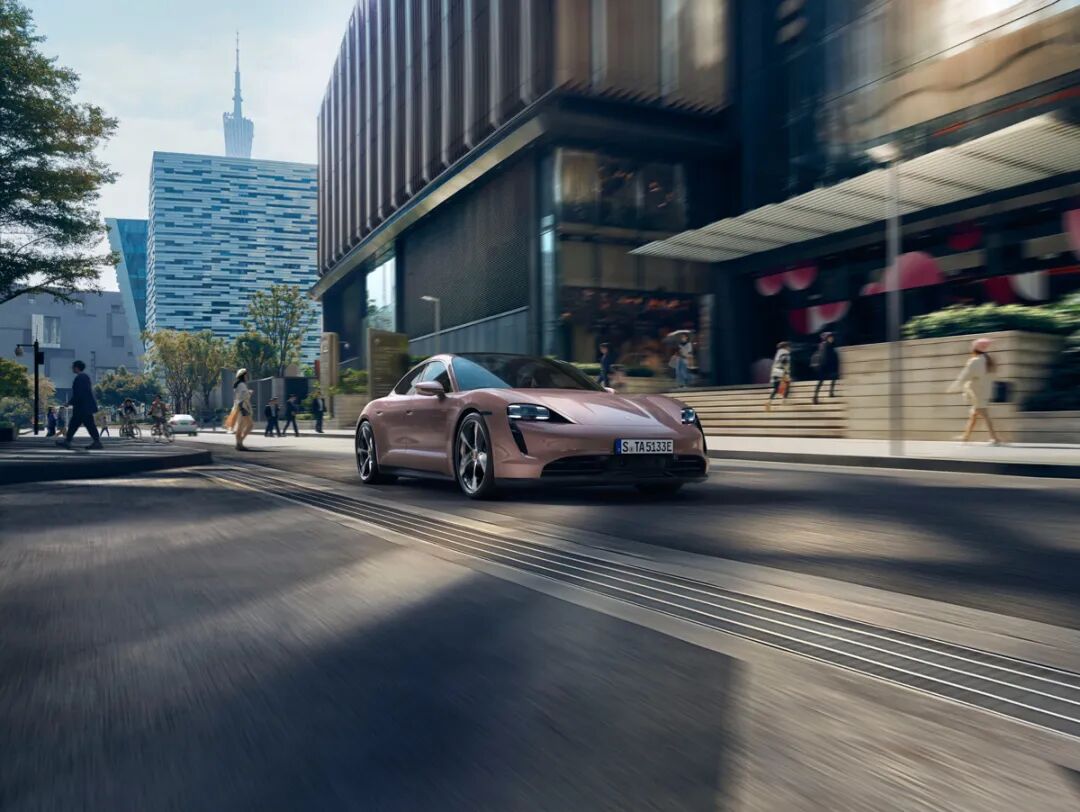 The difference in batteries determines the difference in the vehicle’s maximum performance output. The standard battery can provide a maximum power of 408 horsepower, while the high-performance battery can reach 476 horsepower. However, the difference in horsepower and the added weight of the battery offset each other, so the official acceleration figures for both battery versions are 0-100 km/h in 5.4 seconds, with a top speed of 230 km/h. With over 400 horsepower and the low center of gravity of an electric vehicle, this is still a controllable range for a rear-wheel drive car.Although the larger battery may not provide much improvement in acceleration, it does significantly enhance the range. The standard range should be around 414 km, while the larger battery version can reach 489 km.Porsche emphasizes one point regarding range: the Taycan’s displayed mileage comprehensively considers various factors affecting energy consumption, including driving style, road conditions, outside temperature, and the use of auxiliary devices, making the displayed mileage estimate more realistic and reliable. Over time, the Taycan’s performance mileage will gradually align with the owner’s driving habits.
The difference in batteries determines the difference in the vehicle’s maximum performance output. The standard battery can provide a maximum power of 408 horsepower, while the high-performance battery can reach 476 horsepower. However, the difference in horsepower and the added weight of the battery offset each other, so the official acceleration figures for both battery versions are 0-100 km/h in 5.4 seconds, with a top speed of 230 km/h. With over 400 horsepower and the low center of gravity of an electric vehicle, this is still a controllable range for a rear-wheel drive car.Although the larger battery may not provide much improvement in acceleration, it does significantly enhance the range. The standard range should be around 414 km, while the larger battery version can reach 489 km.Porsche emphasizes one point regarding range: the Taycan’s displayed mileage comprehensively considers various factors affecting energy consumption, including driving style, road conditions, outside temperature, and the use of auxiliary devices, making the displayed mileage estimate more realistic and reliable. Over time, the Taycan’s performance mileage will gradually align with the owner’s driving habits.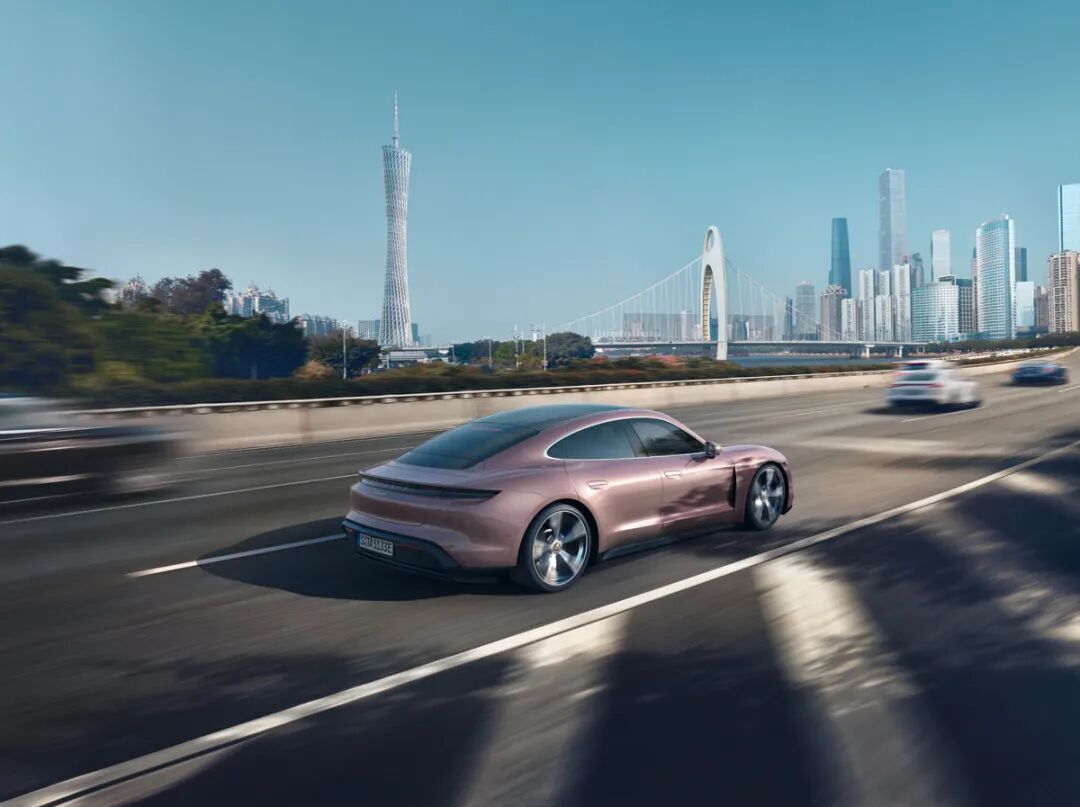 In terms of driving control, the entry-level Taycan is also equipped with the active suspension management (PASM) electronic damping control system as standard. However, the sport version dynamic chassis control system (PDCC Sport), upgraded torque vectoring system (PTV Plus), and rear-axle steering system are optional. If you have the budget and are a driving enthusiast, feel free to check these options; with these skills, you will have a car that drives completely differently from the standard configuration.
In terms of driving control, the entry-level Taycan is also equipped with the active suspension management (PASM) electronic damping control system as standard. However, the sport version dynamic chassis control system (PDCC Sport), upgraded torque vectoring system (PTV Plus), and rear-axle steering system are optional. If you have the budget and are a driving enthusiast, feel free to check these options; with these skills, you will have a car that drives completely differently from the standard configuration.
“Stylish Pink” and HUD Options Available
This entry-level Taycan has added seven body colors: Iceberry Pink, Mocha, Cherry Red, Pink Wood, Neptune Blue, Sky Gray, and Matte Gray, all of which are metallic paints, exuding luxury. The Iceberry Pink, which debuted at the launch event, is stunning, with a hint of gold in the pink.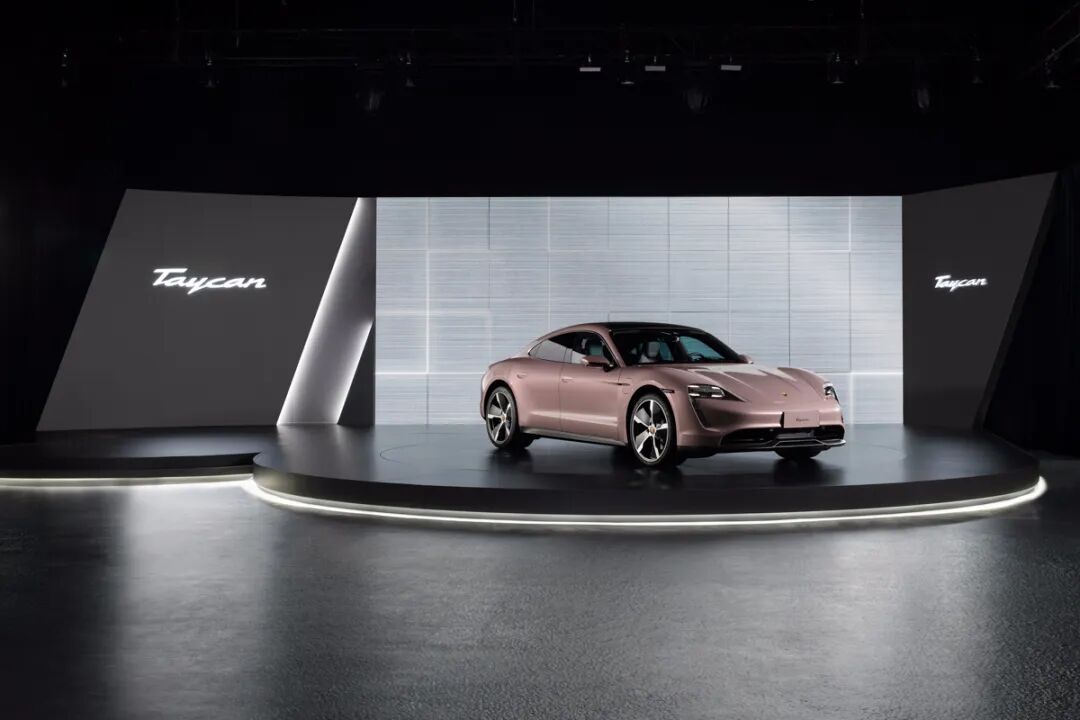 Although there is a huge price gap from the Taycan to the Taycan Turbo S, you need not worry that buying the entry-level Taycan will lead to disdain from keyboard car experts, as many may not be able to tell the version of the Taycan apart from the rear badge.First, the LED headlights with four-point daytime running lights are standard, and the 19-inch Taycan Aero wheels are also standard (except for the Turbo S, all others come with 19-inch wheels). Additionally, the interior features standard 14-way power-adjustable seats with memory, dual-zone climate control, and a panoramic sunroof.
Although there is a huge price gap from the Taycan to the Taycan Turbo S, you need not worry that buying the entry-level Taycan will lead to disdain from keyboard car experts, as many may not be able to tell the version of the Taycan apart from the rear badge.First, the LED headlights with four-point daytime running lights are standard, and the 19-inch Taycan Aero wheels are also standard (except for the Turbo S, all others come with 19-inch wheels). Additionally, the interior features standard 14-way power-adjustable seats with memory, dual-zone climate control, and a panoramic sunroof.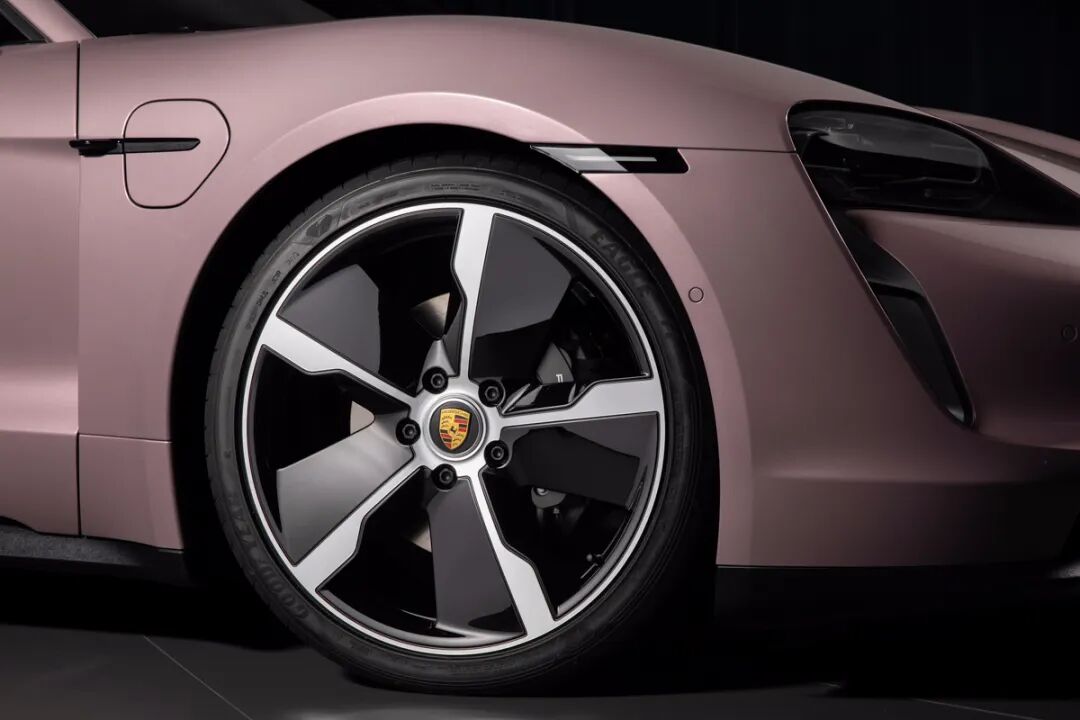 Of course, in Porsche’s dictionary, only options can make it stronger. The entry-level Taycan is no exception; aside from the previously mentioned driving systems, the optional exterior and interior items are Porsche’s most skilled and profitable “money-making” methods.From glacier blue LED headlights to Taycan Exclusive Design wheels with carbon fiber aerodynamic blades, various stitching and colors for the seat centers, there is nothing that Porsche cannot customize for you. You can freely arrange and combine configurations; as long as the money is in place, Porsche can definitely help you create a “one-of-a-kind” vehicle.
Of course, in Porsche’s dictionary, only options can make it stronger. The entry-level Taycan is no exception; aside from the previously mentioned driving systems, the optional exterior and interior items are Porsche’s most skilled and profitable “money-making” methods.From glacier blue LED headlights to Taycan Exclusive Design wheels with carbon fiber aerodynamic blades, various stitching and colors for the seat centers, there is nothing that Porsche cannot customize for you. You can freely arrange and combine configurations; as long as the money is in place, Porsche can definitely help you create a “one-of-a-kind” vehicle.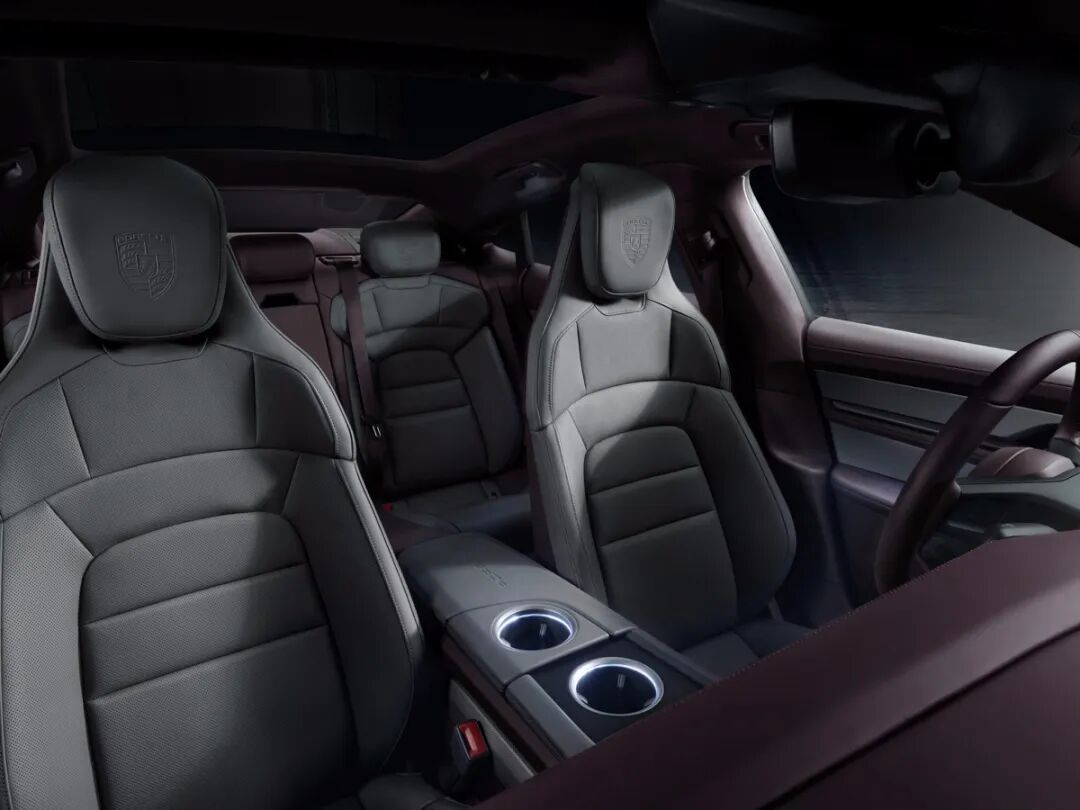 After much anticipation, starting with the entry-level Taycan, Porsche has finally opened up the HUD (Head-Up Display) as an option. This HUD supports full-color projection, adjustable display position, and automatic switching between day and night modes.The driving assistance features of the Taycan are not leading but are sufficient, including a cruise control system with speed limit, a parking assistance system with rearview camera, and a lane-keeping assistance system, among others. Like the other three Taycan models, if you opt for the co-driver screen, there can be up to four screens in the car, which gives it a good sense of technology. In addition to touch control, the Taycan also has voice control, supporting “Hey, Porsche” for one-click wake-up; however, the usability of this voice system remains to be tested.
After much anticipation, starting with the entry-level Taycan, Porsche has finally opened up the HUD (Head-Up Display) as an option. This HUD supports full-color projection, adjustable display position, and automatic switching between day and night modes.The driving assistance features of the Taycan are not leading but are sufficient, including a cruise control system with speed limit, a parking assistance system with rearview camera, and a lane-keeping assistance system, among others. Like the other three Taycan models, if you opt for the co-driver screen, there can be up to four screens in the car, which gives it a good sense of technology. In addition to touch control, the Taycan also has voice control, supporting “Hey, Porsche” for one-click wake-up; however, the usability of this voice system remains to be tested.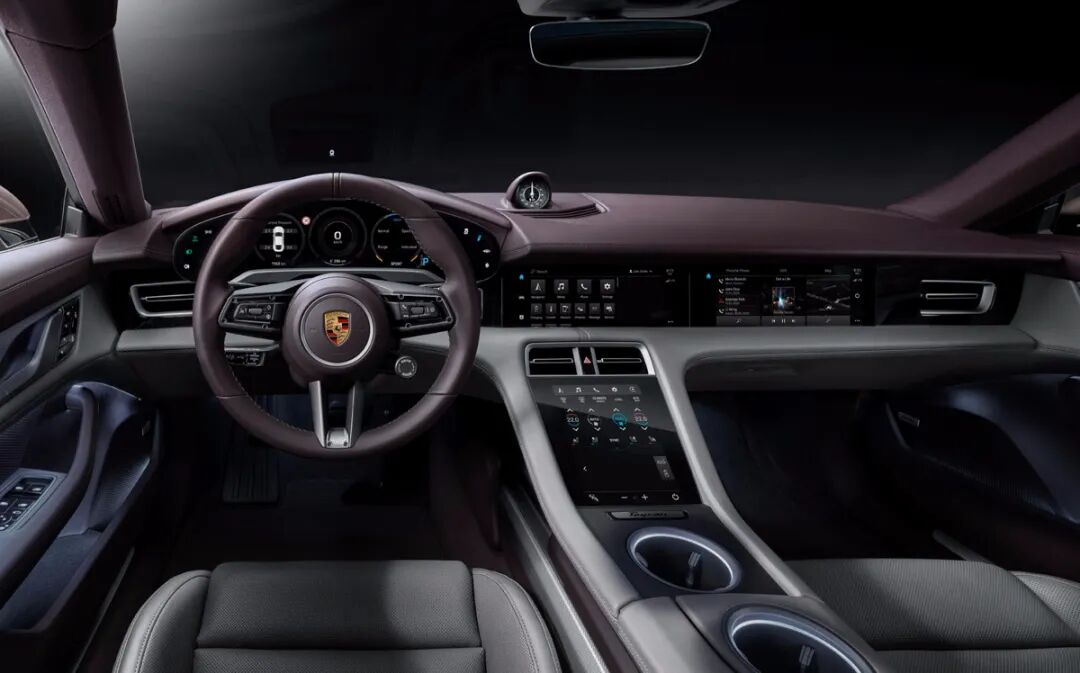
A Noble Car Deserves a Noble Charging Method
In China, charging electric cars has always been a headache. Porsche has planned four charging methods for users: “Home Charging,” “Premium Charging,” “Destination Charging,” and “Cooperative Public Charging.” The first and fourth are easy to understand; one is the standard home charging, and the other is the public charging stations available on the market.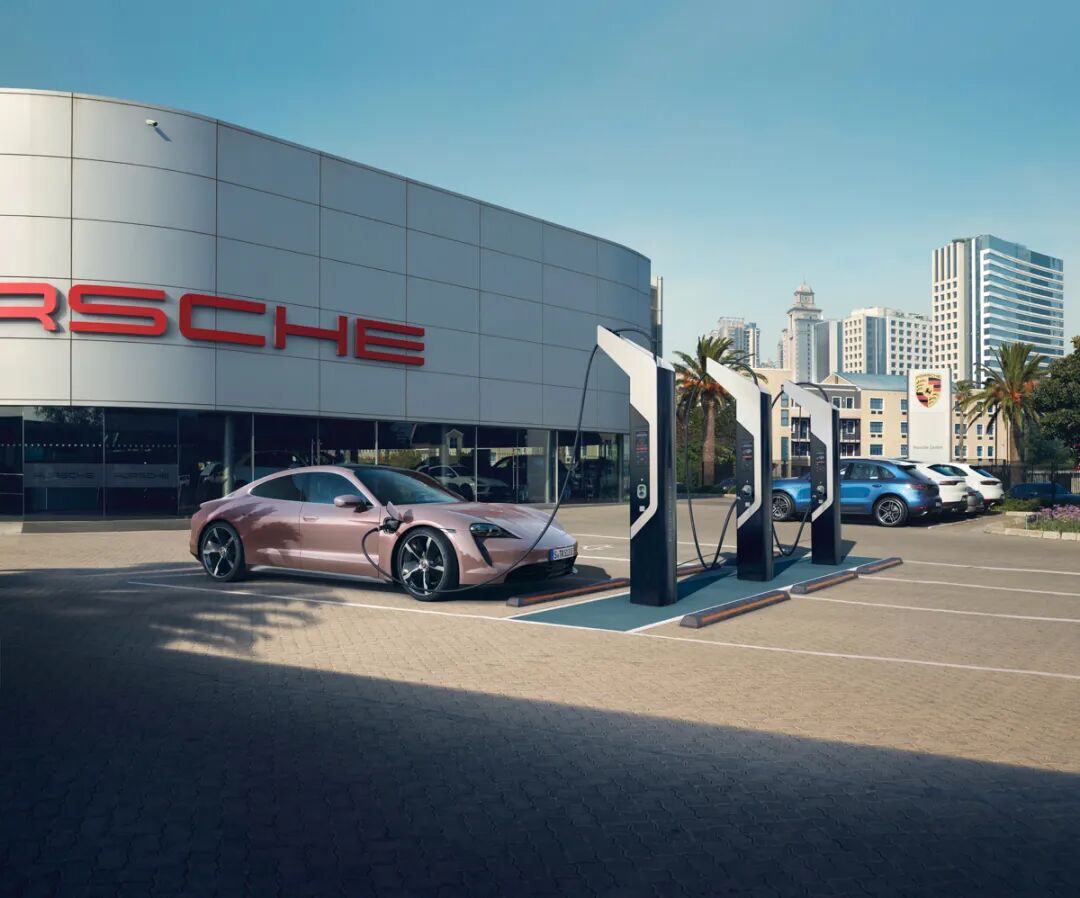 Premium Charging is a value-added service launched by Porsche, somewhat similar to NIO’s one-click charging. You can enjoy Porsche’s exclusive charging network by recharging, and Porsche’s self-built 800V high-power charging stations can charge the Taycan from 5% to 80% in 30 minutes. Currently, these charging stations are mainly built at various Porsche centers. As for the costs, Porsche provided me with a package list:
Premium Charging is a value-added service launched by Porsche, somewhat similar to NIO’s one-click charging. You can enjoy Porsche’s exclusive charging network by recharging, and Porsche’s self-built 800V high-power charging stations can charge the Taycan from 5% to 80% in 30 minutes. Currently, these charging stations are mainly built at various Porsche centers. As for the costs, Porsche provided me with a package list: As for “Destination Charging,” Porsche will cooperate with some high-end hotels to establish a “Destination Charging” network, allowing Taycan owners to charge for free.ConclusionThe Taycan’s strategy remains very Porsche-like, with one car having four configurations, multiple basic configurations forming a series, and each version having a distinct base price. The rich and diverse options make it difficult to delineate the price between different configurations. The biggest highlight of this release is still the pricing; the 888,000 price tag is indeed somewhat surprising, significantly lowering the entry barrier for the Taycan and finally giving rear-wheel drive enthusiasts a target, while also delivering a certain degree of price pressure to the neighboring Tesla Model S.
As for “Destination Charging,” Porsche will cooperate with some high-end hotels to establish a “Destination Charging” network, allowing Taycan owners to charge for free.ConclusionThe Taycan’s strategy remains very Porsche-like, with one car having four configurations, multiple basic configurations forming a series, and each version having a distinct base price. The rich and diverse options make it difficult to delineate the price between different configurations. The biggest highlight of this release is still the pricing; the 888,000 price tag is indeed somewhat surprising, significantly lowering the entry barrier for the Taycan and finally giving rear-wheel drive enthusiasts a target, while also delivering a certain degree of price pressure to the neighboring Tesla Model S.
Thank you for reading the entire article; please give a “like” and “view” to the hardworking writer!

END
- [Video] Super Unboxing | Is the Xiaopeng P7 Smart Car System Really Good? Our Conclusion is……
- The All-New Land Rover Defender: It’s 2020, and Tough Off-Road SUVs Should Change Completely
- Professional Firefighters Analyze the Wenzhou Tanker Explosion; Is There a Risk with Ordinary Car Fuel Tanks?
- [Video] Xiaoka’s Car Life: What is the Cheapest Lamborghini?
- With a Range of Only 400 km, Why Should I Pay for a Toyota Electric Car?
- Why Tesla and Traditional Car Manufacturers Have Different Ideas About Not Using LiDAR?
